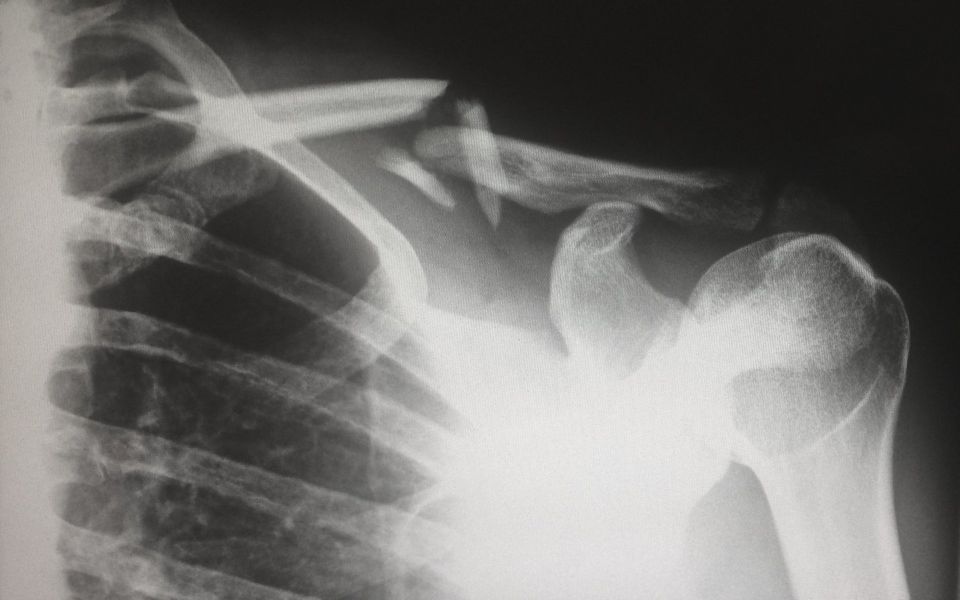A Guide to Workplace Accident & Injury Claims in Ireland
Health and Safety in the Workplace
Safety, Health and Welfare at Work Act
These laws set out the rights and obligations of both employers and employees and provides for substantial penalties for breaches of the legislation. The Act applies to all employers, employees (including fixed-term and temporary employees) and self-employed people in their workplaces.
Health and Safety Regulations
There may be specific regulations that apply to certain workplaces, depending on the nature and type of work involved. These regulations provide more details of the regulatory requirements under the Acts.
In addition to legislation there are also a number of Codes of Practice which relate to health and safety in the workplace.
Purpose of Acts and Regulations
Compliance with the health, safety and welfare at work legislation will help to prevent workplace accidents and injuries from occurring, as well as ensuring that employees are not subjected to a hostile or dangerous work environment.
Health and Safety Authority (HSA)
The HSA is responsible for enforcing health and safety of employees at work, provides information on best practice workplace health and safety protocols. If an employer is negligent in securing a safe environment, and an accident occurs, an employee may be able to make a personal injuries* claim.
Employer Obligations - Health and Safety in the Workplace
Employer Health and Safety Obligations
Employers have a duty under Section 8 of the Acts to ensure that employees’ safety, health and welfare at work is protected as far as is reasonably practicable. In order to prevent workplace injuries and ill health, the employers have a number of obligations, noted below.
Risk Assessment Obligations
Under the Acts, every employer is required to carry out a risk assessment for the workplace which should identify any hazards present in the workplace, assess the risks arising from such hazards and identify the steps to be taken to deal with any risks.
Protective Measures
Where required, employers should tell employees about any risks which require the wearing of protective equipment, and the employer should provide this protective equipment.
Employee Behaviour
Employers have a duty to prevent improper conduct or behaviour (which includes bullying, harassment and violent behaviour). If an employer does not deal with complaints within a sufficient period of time, they may be open to claims for damages by an employee.
Employers Workplace Welfare Obligations
In order to prevent workplace injuries and ill health, the employers have a number of obligations, including:
- the provision and maintenance of a safe workplace which uses safe plant and equipment;
- the prevention of risks from the use of any article of substance and from exposure to physical agents, noise and vibration;
- the prevention of any improper conduct or behaviour likely to put the safety, health and welfare of employees at risk;
- the provision of instruction and training to employees on health and safety;
- the provision of protective clothing and equipment to employees;
- the appointment of a competent person as the company’s Safety Officer.
Risk Assessments in the Workplace
Under the Acts, every employer is required to carry out a risk assessment for the workplace which should identify any hazards present in the workplace, assess the risks arising from such hazards and identify the steps to be taken to deal with any risks.
The employer must also prepare a safety statement which is based on the risk assessment. The statement should contain the details of the employees who are responsible for safety issues. Employees should be given access to the statement and employers should review it regularly.
Employers should carry out a separate risk assessment in relation to employees under 18 years of age. This risk assessment should be carried out before the person is employed. If certain risks are present, including risks that cannot be recognised or avoided by the young person due to factors such as lack of experience, the young person should not be employed.
Employee Obligations - Health and Safety in the Workplace
Employee Health and Safety Obligations
Employees have a number of duties to ensure their health, safety and welfare, and those of fellow employees, are protected in the workplace. The Health and Safety Acts set out rights and obligations of both employers and employees and provide for substantial penalties for breaches of the legislation.
Employee Health and Safety Expectations
Employees are required: to take reasonable care to protect the health and safety of themselves and of other people in the workplace; not to be under the influence of drink or drugs in the workplace; to undergo any reasonable medical or other assessment if requested to do so by the employer; and to report any defects in the place of work or equipment which might be a danger.
Employee Health and Safety Engagement
Employees are required to engage with their employer to the extent required to ensure compliance with the Acts, and are specifically required not to engage in improper conduct or other behaviour that is likely to endanger his/her (or someone else’s) safety, health and welfare at work.
Employee Risk for Improper Behaviour
The Health and Safety Acts provide that an employee shall not intentionally, recklessly or without reasonable cause interfere with, misuse or damage anything provided for the purpose of securing the safety, health and welfare of persons at work and neither shall they place at risk any persons in connection with work activities.
Employees Raising a Safety Concern
An employer’s failure to comply with the duties imposed on them by the law may result in criminal prosecution and include provision for fixed charge penalties. The Health and Safety Act provides that employees must not be victimised for exercising his or her rights under safety and health legislation, such as making a complaint in respect of those failures. This means an employer must not penalise an employee by dismissal or in some other way, for example by disciplinary action or being treated less favourably than other employees, for raising a concern.
Workplace Injury* Benefit and Compensation
If an employee has an accident at work they may apply for Injury Benefit from the Department of Social Protection, if the accident means that the employee cannot perform their work. Employees cannot seek compensation from their employer for an injury sustained at work, under the health and safety legislation.
An employee can, however, make a personal injury* claim through the Injuries Board, an independent statutory body. It will only give an assessment of compensation where the person responsible is not seeking a decision on liability.
Reporting Accident or Injury in the Workplace
Reporting Accidents or Injuries at Work
Employees should report all workplace accidents to the employer, who should then record all details of the incident. This will help to safeguard welfare and other rights which may arise as a result of an occupational accident.
Reporting to Health & Safety Authority (HSA)
Injuries must be reported to the HSA if an employee is unable to carry out their normal work for more than three consecutive days, excluding the day of the accident.
What is not Reportable?
Any injury or accident should be reported to the employer and a record kept, but only fatal and non-fatal injuries are reportable to the HSA. Diseases, occupational illnesses or any impairments of mental condition are not reportable.
Reporting Non-workplace Accidents
An employer may be required to report the injury of a person who is not an employee and who is not at work but who is injured
'from a work activity' if the injured person has had to be taken from the location of the accident to receive
treatment in respect of that injury in a hospital or medical facility.
What is an 'Accident' or 'Personal Injury'?
The Safety, Health and Welfare at Work Act 2005 contains the following definitions:
An ‘accident’ means an accident arising out of or in the course of employment which, in the case of a person carrying out work, results in personal injury.
A ‘personal injury’ includes –
- any injury, disease, disability, occupational illness or any impairment of physical or mental condition, and
- any death, that is attributable to work.
- When should an accident be reported to HSA?
- There are three situations in which an accident should be reported:
- arising in the course of employment resulting in personal injury to the person carrying out the work activity. This could be an injury to an employee who is actually doing the work;
- arising in the course of employment which results in personal injury to an employee who was not doing the work that is the subject of the accident; and/or
- arising from a work activity which results in personal injury to a person outside of the course of employment. This could be an injury to a non-employee or member of the public.
Bringing an Accident or Injury in the Workplace Claim*
Bringing a Claim for Workplace Injury
The Personal Injuries Assessment Board (PIAB) was established to provide independent assessment of personal injury compensation claims for employees who have suffered an injury in the workplace, or while working. In general, a claim must be submitted to the PIAB in the first instance.
Time Limits for an Injury Claim
Our advice is to notify all relevant personnel immediately after a workplace accident or injury. In general, an employee has two months to notify their employer.
Employees may, in some instances, have up to two years from the date of an accident to bring a claim.
What are 'Special Damages'?
Special damages can be anything that goes beyond compensation for the injury, relating to monetary loss suffered, including car hire, damage (e.g. loss of car), damage to clothing or property, loss of earnings, medical consultations, medical treatment fees, medication, physiotherapy, travel, vehicle storage and/or vehicle towing.
Timelines for an Injury Claim
In general, workplace accident claims made to the PIAB are assessed in just over 7 months from when the employer consents to have the claim assessed by the PIAB. Claims for workplace accidents or injuries can take up to 36 months in the civil courts.
What information is required for a workplace injuries claim?
A personal injuries claim usually requires the following details:
- the employee's name, address and occupation;
- the employee’s personal public service number;
- the employer's name, the address and occupation;
- the injuries to the employee alleged to have occurred;
- details of any special damage in respect of which the employee is making a claim; and
- full particulars of the acts or failings of the employer leading to the accident.
What is the 'Book of Quantum'?
The Book of Quantum is intended to provide an indication as to the potential range of compensation for a particular injury. It provides assistance to all those involved in resolving personal injury claims by making the level of damages more predictable and consistent throughout the injury compensation system.
An assessment has a number of components, covering some or all of the following:
- a sum to compensate for pain, suffering and loss of enjoyment of life;
- future cost of medical care;
- loss of earnings into the future caused by the injury; and
- specific losses such as past loss of earnings and medical bills.
Compensation for Injury in the Workplace Claim*
Identify a Category of Injury
Assessment of compensation* starts by identifying that part of the body that has suffered the most significant
injury, although the complete effect of all the injuries will be considered, e.g :
- back and spine
- body and internal organs
- head
- lower limbs
- neck
- upper limbs
Understanding the Severity of the Injury
Generally the severity is categorised into broad ranges to reflect the degree of disruption to
lifestyle, pain and permanency of the condition, e.g :
- minor
- moderate
- moderately severe
- severe and permanent
- Determine the Value Range
The Book of Quantum is then consulted to identify the value given the the relevant injury.
Very often, the majority of cases fall within a given range. However, it should be noted that the actual award may often fall outside of the recommended guidelines.
Consider Multiple Injuries
If, in addition to the most significant injury, there are other injuries, it is not appropriate to
simply add up values for all the different injuries to determine the amount of compensation*.
Where additional injuries arise there is likely to be an adjustment within the value range.
Share








